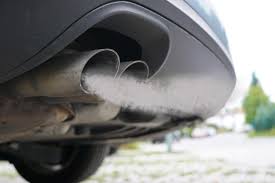300PS 1MZFE TRD Supercharger Kit Build
The 1MZFE TRD Supercharger Kit!
1MZFE TRD Supercharger Parts
Has 168-210+HP Out The Box! A True 3VZ-FE Successor!
Mods Are Easier To Come By For Emissioned States!
Easier To Get To (240+HP)Supercharged/Mods!
Cheaper/Easier To Make Power Against Rivals!
Over 250+HP Mods+Supercharged!
Large Displacement!
Economical!
Still Lightweight!
If Done Right, Emissioned Free For Most States!
Suitable For Lightweight Vehicles!👈
Most Powerful V6 Mod Alternative To A 2GR-FE/FKS!
If you're aiming for a road-legal, supercharged 1MZ-FE build, it's entirely possible to achieve a noticeable boost in power while staying within CARB-legal or emissions-compliant boundaries. The key is sticking to certified parts, primarily the TRD supercharger kit, which is emissions-certified for select model years and delivers solid gains in both horsepower and torque. When combined with a few legal supporting mods like a CARB-approved intake, high-flow catalytic converter, and a cat-back exhaust system, you can safely enhance performance without compromising street legality.
The 1MZ-FE engine came in two main variants that impact your baseline numbers. Early non-VVT-i versions, found in models like the late-’90s Camry and Avalon, start at around 190 horsepower from the factory. Later VVT-i-equipped versions, such as those in 2000+ Camry, Avalon, and Lexus ES300, produce around 210 horsepower stock. These engines are a solid foundation for a supercharged build, offering smooth power delivery, decent fuel economy, and proven reliability, making them ideal candidates for street-driven performance upgrades.
1MZFE TRD Supercharger Kit+Mods!
TRD Supercharger (4–5 psi) +40–60 hp
EO-certified for 1997–2000 MY cars. Boosts torque significantly.
Supercharger Intake Manifold Assembly
Drive Belt & Idler Pulley Assembly
Includes shorter belt routing and a new tensioner bracket
Uses factory serpentine system with modifications
Mounting Brackets and Hardware
All required bolts, spacers, and brackets for direct fitment
Engine-specific brackets for alternator and accessories
Fuel Management Unit (FMU) or TRD ECU Calibration Module
A fuel pressure regulator or piggyback controller
Vacuum Lines and Hoses
Silicone or rubber hoses for vacuum routing, bypass valve, and PCV
Bypass Valve Assembly
Maintains drivability and efficiency by bypassing boost under light load
Throttle Body Adapter & Gaskets
For proper mating of stock throttle body to supercharger inlet
Revised Pulley
Installation Manual (Part #: 00602-17620-3XX or similar)
CARB-legal Cold Air Intake +5–7 hp
Must have EO number (AEM, Injen, etc.)
High-Flow Drop-in Air Filter + 2 hp
K&N or AEM panel filter
High-Flow Catalytic Converter +5 hp
EO-certified cat only
CARB-legal Cat-Back Exhaust +5–7 hp
Magnaflow/Borla with stock or EO cat
Mild ECU tune or piggyback +5–10 hp
Limited gains with factory ECU but can optimize boost/fuel
To safely push close to 300 horsepower at the crank with a supercharged 1MZ-FE while staying as emissions-compliant as possible, a few critical upgrades are necessary beyond the basic TRD supercharger setup. One of the most important is installing larger fuel injectors, which can deliver the additional fuel required under boost. Fortunately, some injector upgrades are considered CARB-legal when paired with the TRD supercharger kit, making them suitable for road use in emissions-regulated areas.
An intercooler is another key component for power and reliability, as it reduces intake air temperatures and improves performance under sustained load. However, most intercooler systems are custom-fabricated and not CARB-certified, which makes emissions compliance more difficult. To support all of these mods, a custom ECU tune or a piggyback tuning system is recommended to optimize air/fuel ratios, ignition timing, and boost response. Since the stock ECU has limited tuning capability, a well-chosen piggyback system can safely push performance without triggering emissions-related issues. With this setup, reaching the 300 hp mark is realistic while keeping the build mostly road-legal.
Every motor and transmission has a weakness. It is very important to address your motor and transmission for weaknesses before modifying them.
Check With Your Local Laws And Regulations Before Modifying, Swiping Motors, And Transmission..👈
Important Information Before Swapping A Motor And Transmission..👈
The Importance Of Transmission Builds..👈
How To Build A Forged Engine..👈
High Performance V6 Toyota Corolla Engine Swaps👈




Comments
Post a Comment